In 2005, Chancellor Henry Yang asked the Campus Planning Committee to create a comprehensive sustainability outline for the campus. A group of approximately 75 individual “change agents” comprised of students, staff, and faculty were trained in the sustainability framework known as The Natural Step in fall 2005. These individuals collaborated with campus sustainability staff to produce the Campus Sustainability Plan and the following mission statement: “The University of California, Santa Barbara is committed to global leadership for sustainability through education, research, and action.” The process has brought together students, staff, faculty, and community members, it has generated a great deal of energy and momentum, and it has fundamentally increased awareness of UCSB’s sustainability potential and the steps necessary to achieve this goal.
The 8th Annual UC, CSU, CCC Sustainability Conference was held June 21-24 at the LA Trade-Technical College, and one of it’s main goals was to share innovative and best practices in campus sustainability for the University of California, California State University, and California Community College systems. Along the way, UCSB highlighted some of its accomplishments, and they’re very impressive! Here’s a few of our bragging rights:
- Talloires Declaration: signed by former Chancellor Barbara Uehling in 1990, committing UCSB to incorporating environmental sustainability into higher education. We are the only UC campus to have signed it. Plus, we believe this was the impetus that led to the formation of the Bren School on the UCSB campus in the mid 1990’s.
- American College and University Presidents Climate Commitment: signed by former UC President Robert Dynes in 2007, committing each campus to reducing their impact on climate change. UCSB Chancellor Henry Yang is a former member of the ACUPCC Board of Directors.
- LEED™ NC: (Leadership in Energy and Environmental Design – New Construction) a) Bren Hall – LEED NC Platinum Award – the first laboratory building in the U.S. with a LEED NC Platinum rating. b) Marine Science Research Building (MSRB) – LEED NC Certified c) Student Resources Building –LEED NC Silver – financed by student fees; the students demanded their building become LEED certified. d) San Clemente Village – LEED NC Gold. LEED™ EB: (Leadership in Energy and Environmental Design – Existing Building) a) UCSB has the most LEED EB buildings in the UC system. b) Girvetz Hall – LEED EB Silver c) Recreational Center – LEED EB Silver. d) Bren Hall – LEED EB Platinum – the first building in the world to achieve double platinum. e) 23 more to be certified over the next five years (see below). f) In November 2007, UCSB joined the pilot Portfolio Program under which the campus will develop campus-wide LEED EB credits that will be standard for every project and will certify 25 existing buildings in the next few years. We are the only campus in the UC system involved in this pilot program.
- Energy: through HVAC and lighting retrofits, delamping (removing unnecessary lights), Flex Your Power campaigns, etc., the campus has decreased its per-square-footage electrical consumption by 31% and its natural gas consumption by 23% since 1998.
- The UCSB Recreational Center Photovoltaic panels consist of a 133 kWh array of photovoltaic panels that provide 70% of the building’s energy. The Rec Cen is also looking into other sources of more renewable energy, and it plans to install solar water systems in the near future to provide heated water for the pool (and reduce the power required to run the boilers).
- Ellison Hall Sustainability Committee – A TGIF-funded project (see below), Geography, ICESS and Crustal Studies, and Political Science have recycling pods on all six floors collecting traditional (printer paper, bottles, cans, newspaper) and non-traditional recyclables (e-waste, toner cartridges, plastic bags, food). They have four worm bins for composting food waste in the building. They currently divert close to 89% of their waste – trying for net zero waste in a few years.
- UCSB’s recycling program diverts 69% of its waste from a landfill – we also have a student-run e-waste recycling program (A.S. Recycling). In addition, the campus will be required to divert 75% of our waste by 2012 and 100% by 2020.
- Environmentally Preferable Purchasing (EPP) Catalog – consists of a list of EPPs, separate from UCSB’s main supply catalog, that departments can purchase office supplies, etc. from – for example: 100% post-consumer, recycled-content paper. • Almost 80% of our paper purchases have 30% or more recycled content. • In 2009-10, UCSB purchased the most recycled-content products in the UC system.
- TGIF (The Green Initiative Fund), a $2.60 lock-in fee paid by students each quarter to fund projects that help to reduce the campus’ impact on the environment ($180,000 annual fund). The fund is overseen by a student majority governing committee. We were the first campus in the UC system to vote on and pass this fee – four UC campuses since then have passed TGIFs. TGIF was reaffirmed in 2010 by 62%.
- Sustainability Tracking Assessment & Rating System (STARS): is a voluntary, self-reporting framework for gauging relative progress towards sustainability. It enables meaningful comparisons over time and across institutions by establishing a common standard of measurement for sustainability in higher education (www.aashe.org/stars). UC San Diego and UCSB were the only two UC campuses selected for this pilot program. Prof. Simone Pulver’s class will be doing the STARS data collection in Fall 2010.
- UCSB Awards: Since 2007, UCSB has won 15 Awards for leadership in sustainable practice: National Wildlife Federation (Cool Planet) acknowledged us for our energy conservation projects (2007); the County of Santa Barbara awarded us the Green Award for overall sustainability efforts (2007); the Governor’s Environmental and Economic Leadership Awards presented to Kids in Nature at the Cheadle Center for Biodiversity and Ecological Restoration (CCBER) (2007); and Flex Your Power recognized us for our for energy conservation efforts. (4/08). LabRATS received the Organization Award from Labs21 for sustainable lab practices (9/08). UCSB custodians received the Green Cleaning Award from American School and University Magazine (10/08). Geography, the Earth Institute, and Political Science (Ellison Hall Sustainability Committee) won the Waste Reduction Awards Program – WRAP Award (10/08). Manzanita Village/CCBER won the Professionals Award from the American Society of Landscape Architects (11/08). The Student Resources Building (SRB) and Sasaki Associates won the Honor Award from the Architectural Foundation of Los Angeles – Design Green Awards (11/08). UCSB won the Bike Friendly Business Gold Award from the League of American Bicyclists (3/10). San Clemente Villages Graduate Student Housing won the Goleta Valley Beautiful Award (3/10). Best Practice Awards 2010: The Program for the Assessment and Certification for the Environmental and Sustainability (PACES) won the Student Sustainability Program award, Residential Dining won the Sustainable Food award, and CCBER’s work on the San Clemente Bioswale won the Water Efficiency and Management award. UCSB was listed in the US News Ten Eco-Friendly Colleges in June 2010, and the UC received the Millennium Environmental Award from Global Green USA in June of 2010.
- Housing & Residential Services sustainability efforts include: solar water heating providing hot water for dorms; recycling used cooking oil from dining commons for biodiesel; an extensive recycling program, including composting of food waste; purchasing 15% local and/or organic foods for dining commons; using Green Seal cleaning products for custodial duties; 100% of used cooking oil in campus dining facilities is recycled for biodiesel; trayless dining has led to a 54% reduction in food waste, and post-consumer waste composting in DLG which has led to a 90% diversion rate and expanded composting to more dining facilities. This program has also provided reductions in water use.
- UCen’s sustainability efforts include the following: a) Recycle all of their used cooking oil for biodiesel. b) Compost pre-consumer green waste and coffee grounds. c) Purchase 80% Fair Trade, Organic, or combination Fair Trade/Organic coffee. d) Purchase 7% organic and local grown produce. e) All rice, legumes, pastas are organic. f) Extensive recycling within the UCen. g) Restrooms have been converted to use waterless urinals and all use 100% recycled content hand towels. h) 100% recycled office pack in UCen Dining. i) Grow their own organic herbs and flowers (flowers for Catering events). j) Use of Green Seal Certified cleaners for majority of cleaning jobs in the UCen.
- Transportation Alternatives Program (TAP): 81% of students and 9% of faculty and staff commute to campus by an alternative method- bike, bus, carpool, vanpool, etc. We also have a carshare program, using ZipCar – hourly rental hybrid cars – which is available to faculty, staff, students, and community members in order to increase the number of people who do NOT bring their cars to campus or the surrounding community. (http://tap.ucsb.edu/)
- UCSB students get unlimited access to the MTD bus system between Goleta and Carpinteria as a part of their lock in fees ($13.13)
- UCSB also designated by the EPA as one of the Best Workplaces for Commuters.
- Bicycle Storage Lockers are also a part of the draft policy on bike infrastructure
- UCSB has 7 miles of Class I (separate from cars) bicycle path
- UCSB is the first University of California campus with Skateboard lanes
- We have over 40 Electric Vehicles and a number of CNG vehicles
- Academics and Research: We have approximately 269 courses on the campus with some form of an environmental or sustainability focus. The following are the programs and/or degrees related to sustainability: • Bren School of Environmental Science & Management: Master’s and Ph.D. degrees • Environmental Studies Program: Bachelor of Arts and Bachelor of Science degrees – one of the nation’s first environmental studies programs created in 1970 after a 1969 oil spill in the Santa Barbara Channel • Department of English: Literature and the Environment Program (created in 2008) • Technology Management Program, College of Engineering and the Bren School: Eco-Entrepreneurship Program (created in 2007) • Summer Program for Environmental Media: Blue Horizons and Green Screens Programs • Carsey-Wolfe Center for Film, Television, and New Media: Environmental Media Initiative and the GreenScreen Environmental Media Program • Writing Program: environmental business plan competition for projects that look at the triple bottom line • Our Academic Senate is currently working on core curriculum requirement for all undergraduates in sustainability (in committee now and should be formally approved in 2010/2011 academic year) UCSB research organizations aligned with sustainability: • College of Engineering: Institute for Energy Efficiency (created in 2008) – received an Energy Frontiers Research Center grant from the federal government to expand energy efficient technology (2009) • College of Engineering: Solid State Lighting and Energy Center • College of Engineering: Center for Energy Efficient Design • Bren School: Research Program on Energy and Water Sustainability (created in 2007) • Bren School: Governance for Sustainable Development • Bren School: Water Policy Program
- Green Cleaning Program: In 2004, we created Low Environmental Impact Cleaning Policy for the campus custodial services. All cleaning products and soaps used by the custodial staff are Green Seal certified. Furthermore, campus toilet tissue, seat covers, and brown paper towels have 100% recycled content. (see award above)
- Chancellor’s Sustainability Committee: Established in 2008, the CSC is made up of faculty, administrators, staff, graduate students, and undergraduate students and has 2 Nobel laureates that advise the campus administrators and the Chancellor on matters of campus sustainability, make recommendations on sustainability initiatives, help prioritize and monitor the execution and progress of the campus sustainability plan toward our goals, make recommendations on allocations of available funding resources, and provide guidance in the creation and fostering of alliances. The committee conducts ongoing and thorough consultative process to solicit input in developing our vision to enhance our international leadership in this critically important area, using the Campus Sustainability Plan as a blueprint for our campus’s sustainability efforts.
- Campus Sustainability Change Agent Teams: Established in 2004, ten change agent teams were established that focus on specific topic areas. An eleventh team was added in 2008 (Communications): • Academics & Research • Built Environment • Communications • Energy • Food • Labs, Shops, & Studios • Landscape/Biotic Environment • Procurement • Transportation • Waste • Water
- Climate Action: UCSB was an early member of the California Climate Action Registry. We’ve been reporting our emissions since 2005 and have certified our emissions from 2004, 2005, 2006, 2007, and 2008, and we are in the process of certifying 2009. We also established a Greenhouse Gas Reduction Plan and have established targets for reducing our GHG’s to 2000 levels by 2010, to 1990 levels by 2020, and for becoming climate neutral by 2050.
- LabRATS: UCSB is the first campus is the US to start a Laboratory Research and Technical Staff working group to assess the environmental performances within our laboratories. This group works with the lab occupants on improving the environmental performance of their research and operations. There are 776 labs on the UCSB campus
- Policies established for the campus: The Sustainability Change Agent Teams crafted 8 policies that were approved by the Chancellor’s Sustainability Committee and the Chancellor and are now interim policies for the campus. They cover: • Alternative Fuel/Ultra Efficient Vehicles. By 2011, 75 percent of campus light-duty fleet purchases will be alternative-fueled and/or ultra-efficient vehicles. By 2016, 95 percent of light-duty fleet purchases will be alternative-fueled and/or ultra-efficient vehicles (35.5 miles per gallon, to match the Corporate Average Fuel Economy standards). • Bicycle Path/Parking Improvements. All new campus building projects, including expansions and renovations, are required to improve or create a connecting bicycle route, as well as a pedestrian refuge zone. Projects are required to provide areas for bicycle racks and secured bicycle parking. New buildings must include shower and changing facilities to support bicycle commuting. • Energy Efficiency. Effective July 1, 2010, all product categories that have Energy Star-rated products available, and which meet the same performance standards required by UC faculty and researchers, will be given priority over non-Energy Star alternatives. For high-value purchases, weight will be given for energy efficiency, quantity of recycle content, and location of manufacture to UCSB. • Green Building. Buildings started after July 1, 2010, must meet LEED Gold certification status. The same status will apply to building renovations (over $5 million) and all new, low-rise housing/residential construction projects. In addition, it specifies that all existing buildings included in the campus’s Pilot Portfolio Program must be certified at the Gold level. • Sustainable Furniture. “Green” options from among strategic sourcing vendors will be selected for all furniture purchases starting July 1, 2010. If no “green” options are available, UCSB’s Purchasing Department will locate viable options that contain a high recycled content, utilize low or no Volatile Organic Compounds adhesives or finishes, are made from renewable resources, and that travel the least distance to campus, decreasing environmental impact due to transport. Re-use of furniture is also critical. • Laboratory Practices. All research laboratories are being strongly encouraged to certify through the Laboratory Research and Technical Staff (LabRATS) Assessment Program. LabRATS will review blueprints for any buildings that contain labs as part of the current ecological process that is coordinated by the LEED manager. New and renovated laboratory buildings should be designed according to the principles of the LABS21 environmental performance criteria. • Sustainable Paper Use. Effective July 1, 2010: no virgin paper shall be used by campus departments; faculty will be strongly encouraged to require class work be submitted double-sided or printed on the blank side of previously used paper; a minimum of 30 percent post-consumer waste and recycled content shall be utilized by all campus departments; and all printers and copiers purchased by departments shall include duplex capability. • Renewable Energy. The university will explore and invest in renewable energy, both on- and off-site. The university will obtain 25 percent of its power via renewable sources by 2014, 45 percent by 2020, 75 percent by 2030, and 95 percent by 2045. UCSB will use both solar and wind power, on- and off-campus, in the most effective way. And the university will reduce greenhouse gas emissions to 2000 levels by 2014, to 1990 levels by 2020, and to net carbon neutrality by 2050. The above will remain interim policies for one year while they go through the formal campus policy process.
- 90% of the campus landscape is irrigated by reclaimed water.
- The campus has 238 acres of non-irrigated open space, including areas of intact native vegetation and wetlands. The Cheadle Center for Biodiversity and Ecological Restoration (CCBER) which protects and enhances native biodiversity and wetlands through training students in the field to help manage and restore these areas.
- The Compost Program: is a partnership with MarBorg and takes pre- and post-consumer food waste and from three of our dining commons (the 4th –which is De La Guerra will be added on in Fall 10), mixes it with green waste from our landscape, and returns it to the campus as soil amendment.
Editor’s note: Thanks to Mo Lovegreen for compiling this list

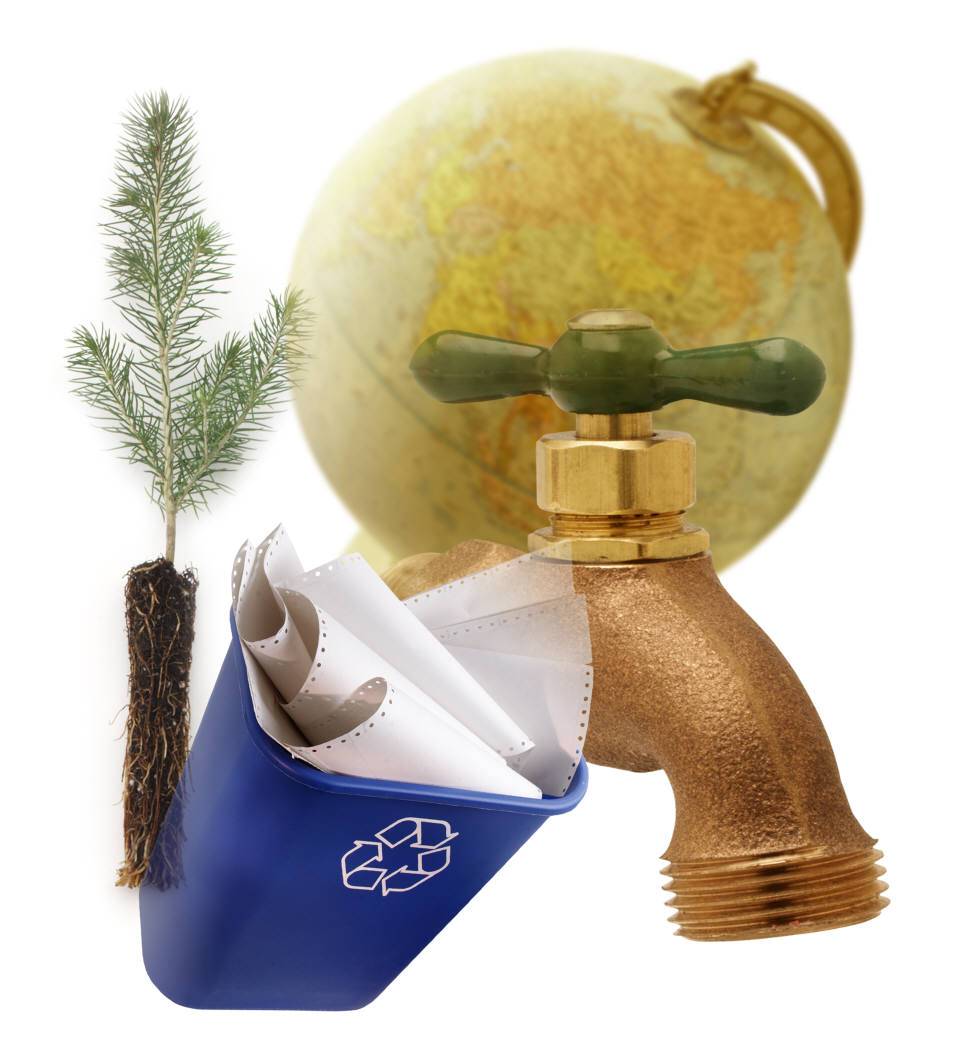

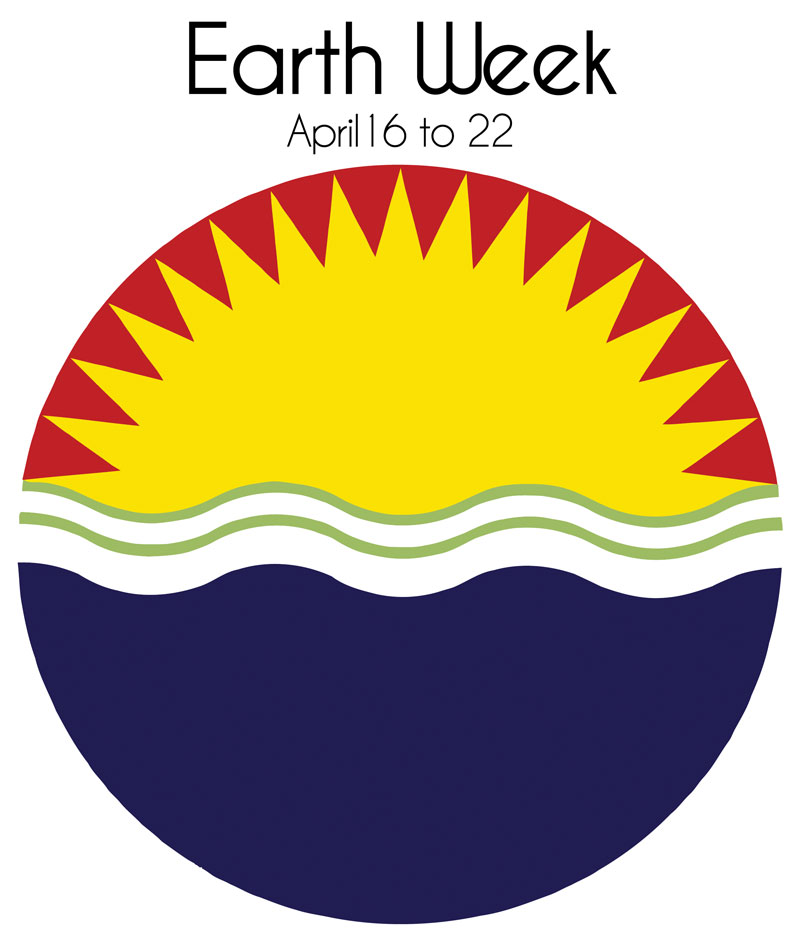
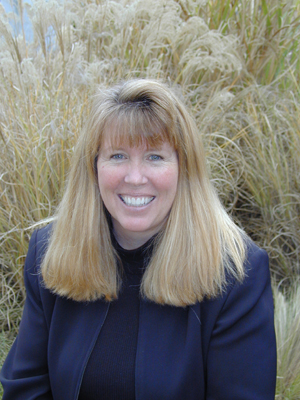
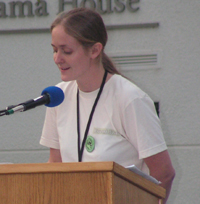
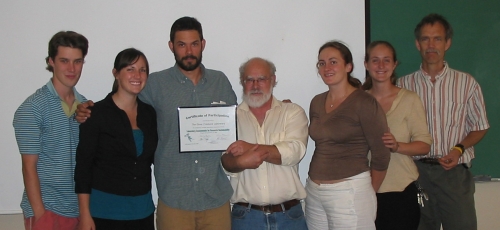




.jpg)




.jpg)
